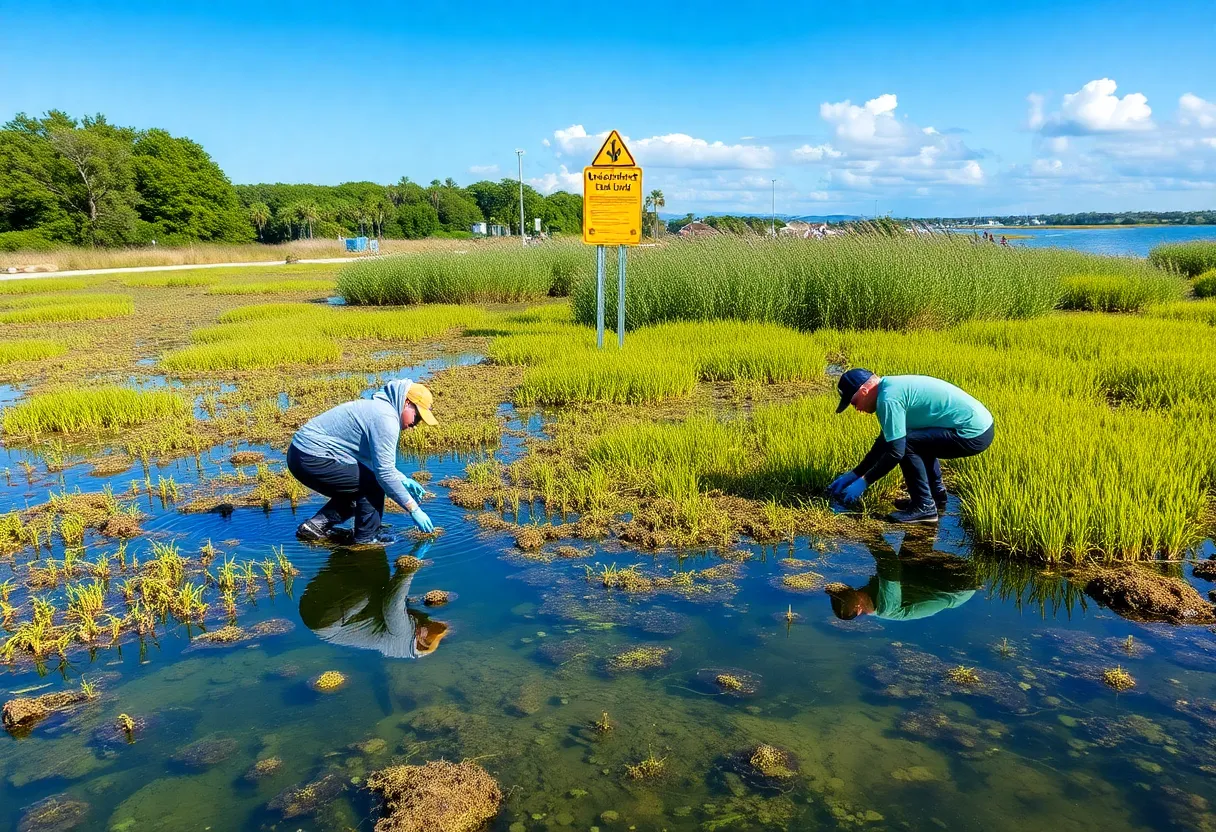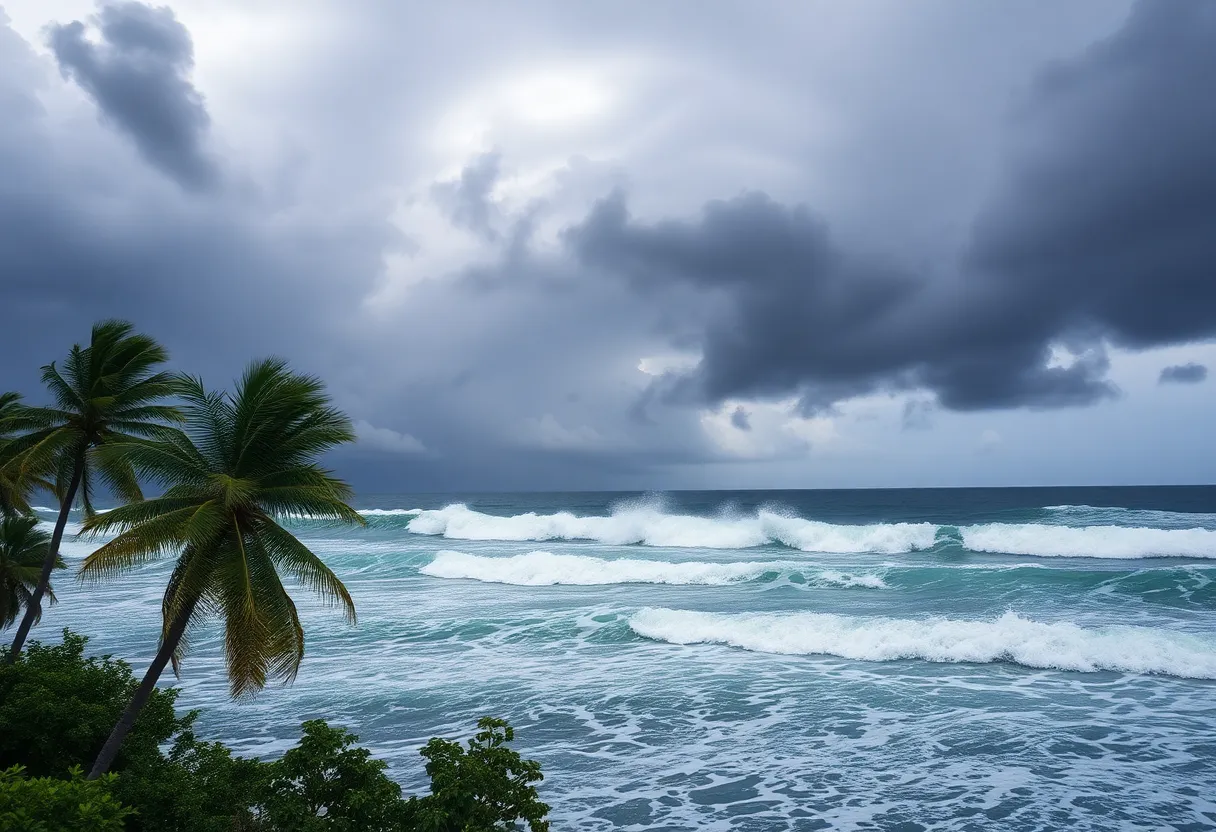News Summary
St. Petersburg is initiating a significant seagrass restoration project at North Shore Park to combat shoreline degradation and enhance water quality. This ambitious initiative will involve filling a dredge hole and planting native seagrasses over 32 acres, with a project completion targeted for summer 2027. Collaborating with Tampa Bay Watch, this effort promises to revitalize the marine ecosystem, benefiting local fish and manatee populations while providing economic advantages through mitigation credits.
St. Petersburg Embarks on Exciting Seagrass Restoration Journey at North Shore Park
In a vibrant move towards environmental recovery, St. Petersburg is embarking on a groundbreaking seagrass restoration project at the lush North Shore Park, situated at the welcoming entrance of Coffee Pot Bayou. This initiative is not just local news; it’s a beacon of hope for marine ecosystems across the United States!
Over the years, the shoreline at North Shore Park—spanning an impressive 180 acres—has faced significant challenges. Historical activities such as dredge hole construction, dredge channeling, and the not-so-gentle touch of recreational boats and vessel propellers have led to a troubling situation where the area acts as a sponge for pollutants instead of a thriving habitat.
One of the critical aspects of this area is its seagrass, which plays a pivotal role in maintaining the health of the waters. These underwater plants are essential for enhancing water clarity, stabilizing sediments, and providing habitats for a multitude of marine life. Sadly, the degradation of this habitat has resulted in an unsettling decline in not just water quality, but also fish and manatee populations.
But don’t fret! The City of St. Petersburg has come together with Tampa Bay Watch to tackle this issue head-on. Using recycled, natural materials sourced from a SeaPort Manatee project, they have laid out an ambitious plan aiming to fill in a 32-acre dredge hole and plant 32 acres of native seagrasses. This concerted effort seeks to establish a mitigation bank which will breathe new life into North Shore Park’s ecosystem.
What to Expect from this Exciting Endeavor?
As the project unfolds, residents can gear up for visible changes along the coast. The filling phase of the dredge hole is set to kick off in fall 2025 and wrap up by spring 2026. Following that, the seagrass planting will commence in the iridescent waters come summer 2026, with expectations leaning towards a project completion by the summer of 2027.
With this undertaking, residents will witness construction activities firsthand right off the coast of North Shore Park. Expect to see an array of barges and vessels transporting materials as they work diligently to restore balance to this vital ecosystem. Although construction can lead to an increase in turbidity and sediment in the water, special precautionary measures, like curtain barriers around the project site, are being put in place to minimize any sediment spread.
Boaters, Be Aware!
For those venturing out on the water, new marine signage will help keep boaters informed about the newly developed shallow areas, ensuring safety while navigating through these rejuvenating waters. A total of 15 warning signs will accompany the project, marking the shallow seagrass zones for clearer awareness.
This innovative seagrass restoration project is remarkable in more ways than one. It has taken nearly a decade to bring this vision to life, marking it as potentially the first of its kind in the entire United States. The estimated transformation of 178 acres of North Shore Park into a healthy seagrass habitat promises to bolster local fish and manatee communities, while significantly enhancing water quality.
Financially Sound Solutions
In addition to restoring the ecological balance, the project has an economic aspect to it as well. It plans to generate federal mitigation credits that can be sold back to developers. This could result in an impressive estimated revenue of $10.06 million in credits, with each having a value of about $750,000. Quite a commendable effort on both environmental and financial fronts!
With an anticipated need for approximately 470,000 cubic yards of material to fill the dredge hole, regulatory approvals have been pivotal to navigate, reflecting the complexity of the necessary permitting process. Public outreach and education regarding construction activities and the fundamental benefits of the seagrass ecosystem are also integral to the success of this project.
Ultimately, this seagrass restoration project is set to breathe new life into North Shore Park, turning it into a welcoming haven for both marine life and community enjoyment. So, whether you’re a local resident or a curious visitor, keep your eyes peeled for the changes soon to grace the beautiful waters of St. Petersburg!
Deeper Dive: News & Info About This Topic
HERE Resources
St. Petersburg Launches Seagrass Mitigation Bank Project
Additional Resources
- I Love The Burg: North Shore Park Restoration
- Fox 13 News: St. Pete to Begin Innovative Seagrass Restoration Project
- St Pete Catalyst: Seagrass Preservation and Economic Impact
- TCPalm: Brevard Zoo Plants Seagrass in the Lagoon
- Wikipedia: Seagrass

Author: STAFF HERE PETERSBURG WRITER
The ST PETERSBURG STAFF WRITER represents the experienced team at HEREStPetersburg.com, your go-to source for actionable local news and information in St Petersburg, Pinellas County, and beyond. Specializing in "news you can use," we cover essential topics like product reviews for personal and business needs, local business directories, politics, real estate trends, neighborhood insights, and state news affecting the area—with deep expertise drawn from years of dedicated reporting and strong community input, including local press releases and business updates. We deliver top reporting on high-value events such as Grand Prix of St. Petersburg, Localtopia, and SHINE Mural Festival. Our coverage extends to key organizations like the St. Petersburg Area Chamber of Commerce and St. Pete Downtown Partnership, plus leading businesses in finance, manufacturing, and healthcare that power the local economy such as Raymond James Financial, Jabil, and Bayfront Health St. Petersburg. As part of the broader HERE network, including HEREJacksonville.com, HEREOrlando.com, HERETallahassee.com, and HERETampa.com, we provide comprehensive, credible insights into Florida's dynamic landscape.





